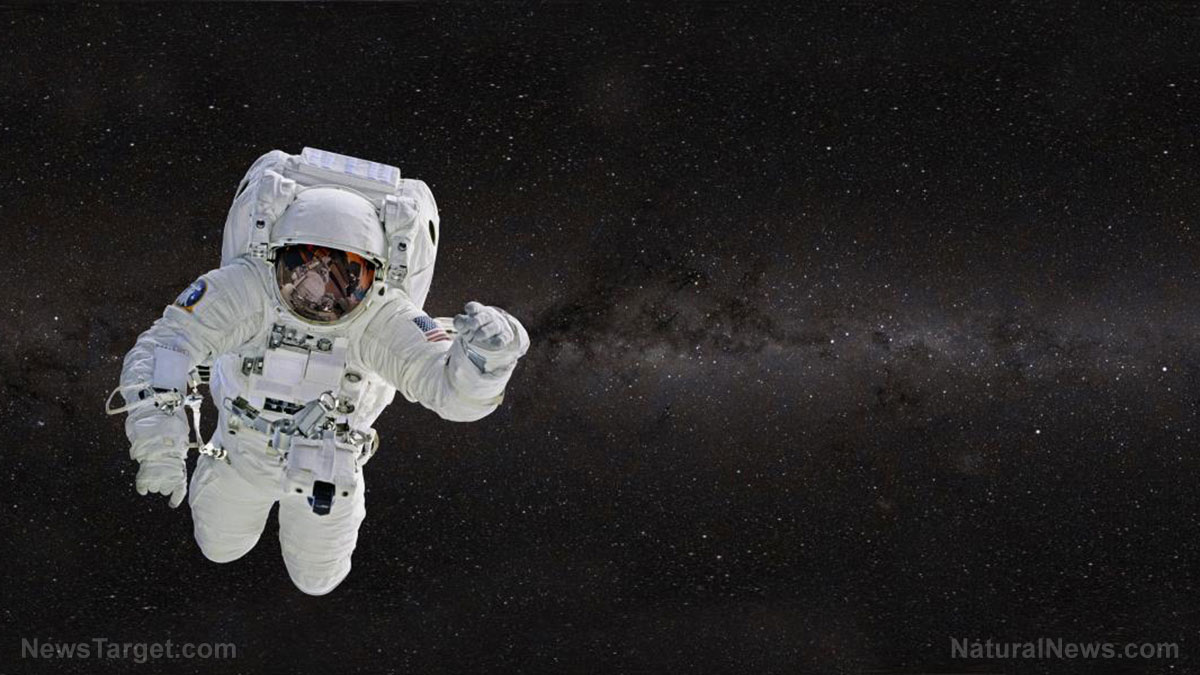07/13/2016 / By Greg White
The detection of gravitational waves last February launched a wave of excitement in the astronomical community. Surfing on the tale end of the discovery, two Spain physicists believe the detection of gravitational waves could in turn help researchers detect cosmic strings, hypothetical one-dimensional subatomic particles that constitute the fabric of reality.
Whenever astronomers look out into the depths of space, they are observing the universe as it was in the past. This is because light travels at a finite speed. The light hitting Earth now started at an object a long time ago. For instance, light emitted by the sun takes eight minutes to reach Earth. Therefore, we are observing the sun as it was eight minutes ago.
The universe exploded into existence in a hot flash approximately 13.7 billion years ago. Since the early universe was much denser than it is today, light scattered a lot. The scattering caused information stored inside those photons to be lost. This creates a hurdle for scientists trying to peer back into the early universe, because there is a great deal of background noise to consider.
Strung out
This isn’t true with respect to gravitational waves, however. Gravitational waves are transparent, passing through the early universe. As a result, the waves will harbor information about the antecedent conditions that spawned them.
In addition, gravitational waves could be used to detect objects that do not emit light. These objects will be discernible because of how they disperse gravitational waves. In addition to detecting the presence of black holes, gravitational waves could unearth cosmic strings.
String theory is the leading candidate that attempts to blend general relativity, the physics of the very large, with quantum mechanics, the physics of the very small. As the name implies, string theory suggests the fabric of reality is laced together by tiny, microscopic strings. Unfortunately, observing cosmic strings would require energy levels far greater than what conventional colliders are capable of. Astronomers need energy scales on par with those which were at the big bang in order to catch a glimpse of these hypothetical entities.
Riding the gravitational wave
Since these energies surpass current capabilities, physicists must look for alternative options. According to Fernandez-Nunez and Oleg Bulashenko of the University of Barcelona, gravitational waves are that alternative option. They imagined a string as a sharp crease in space-time and calculated how the gravitational waves would propagate through the crease.
The team found the wave pattern would look exactly like a light beam that scattered off a thin wire. This means researchers can utilize classical optics to determine the spatial patterns of gravitational waves and how those patterns would permeate the fabric of space-time.
Nevertheless, there are issues that must be figured out in order to test the hypothesis. Currently, the technology necessary to measure gravitational waves that the researchers’ hypothesis demands does not exist. Furthermore, it is unlikely that astronomers would find a pattern with the right intensity from their location on Earth.
Regardless, gravitational wave astronomy is still a budding science. The researchers are proposing ideas about how their calculations can be used to help understand solid state physics. Their paper is available on the pre-print website arXiv.org and has yet to be peer reviewed by other astrophysicists.
Sources include:
ScienceAlert.com
ARSTechnica.com
ARXIV.org
Cornell.Edu
Science.NaturalNews.com
















